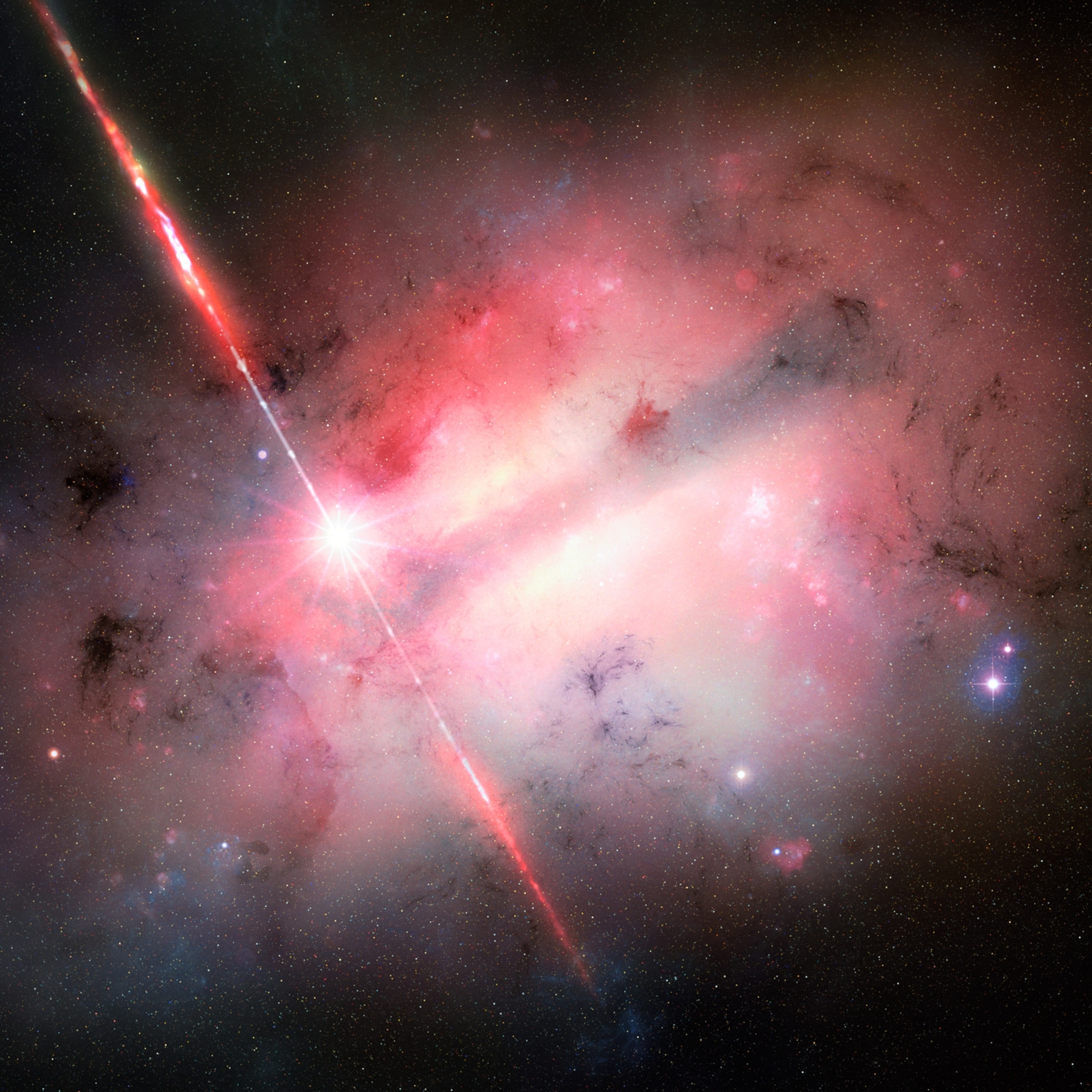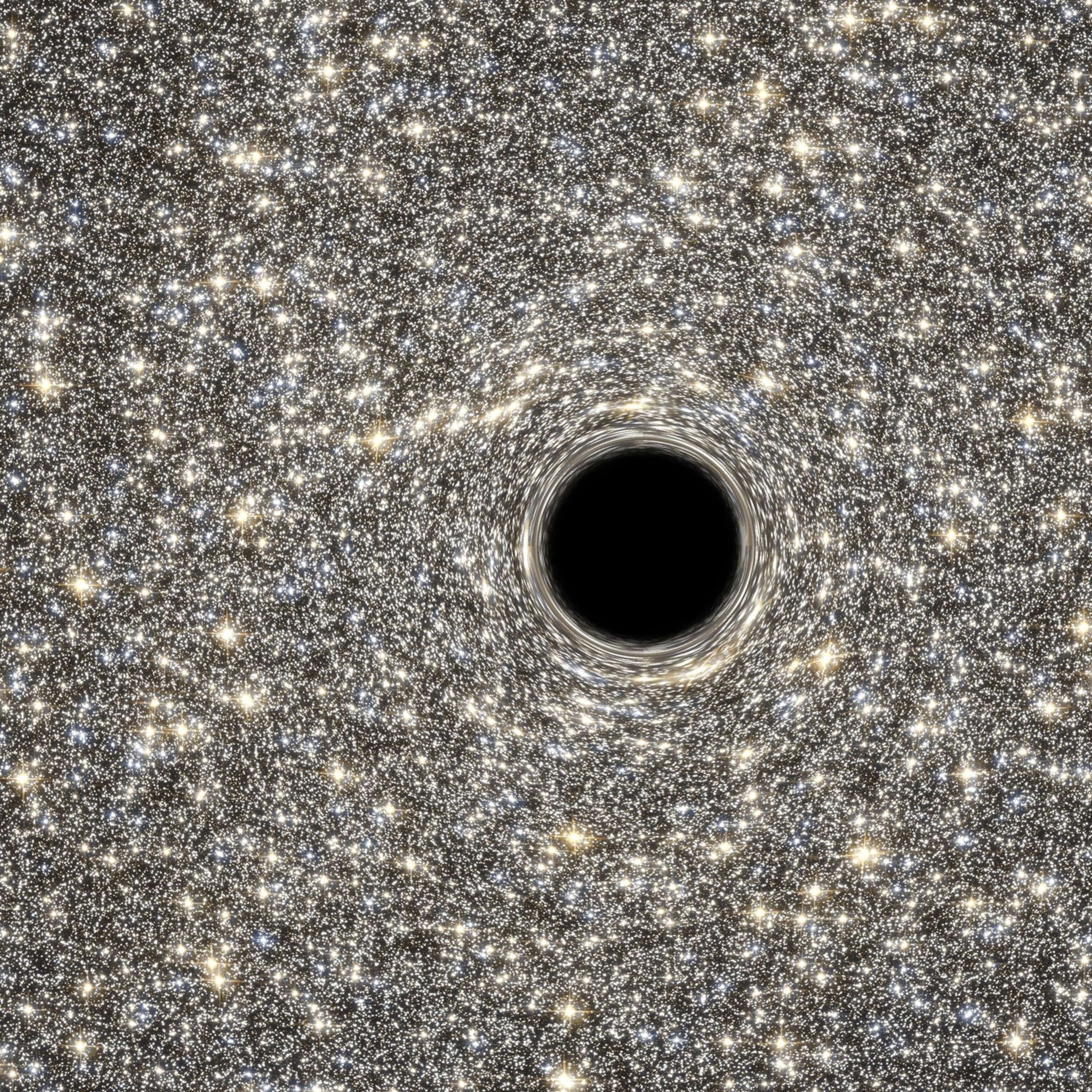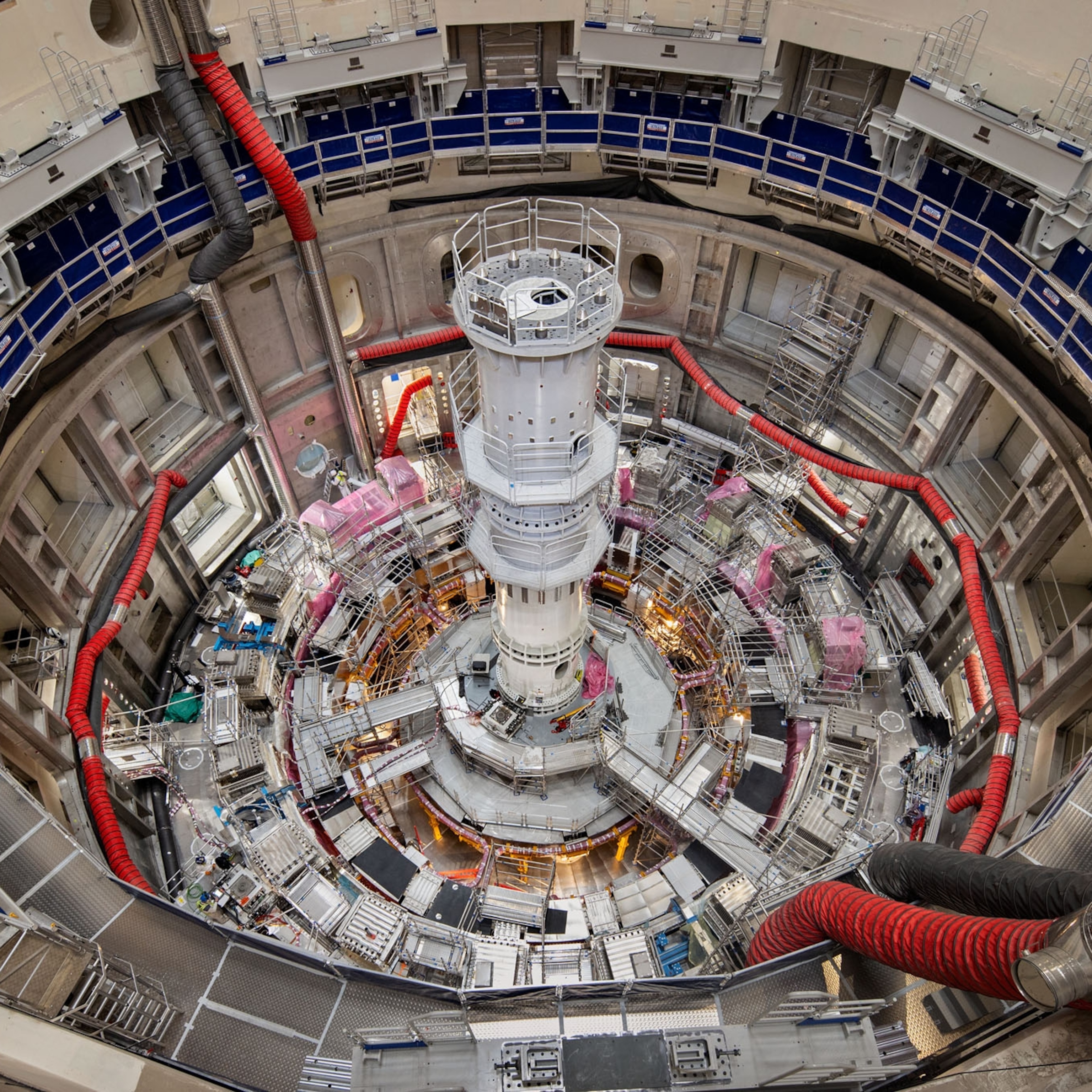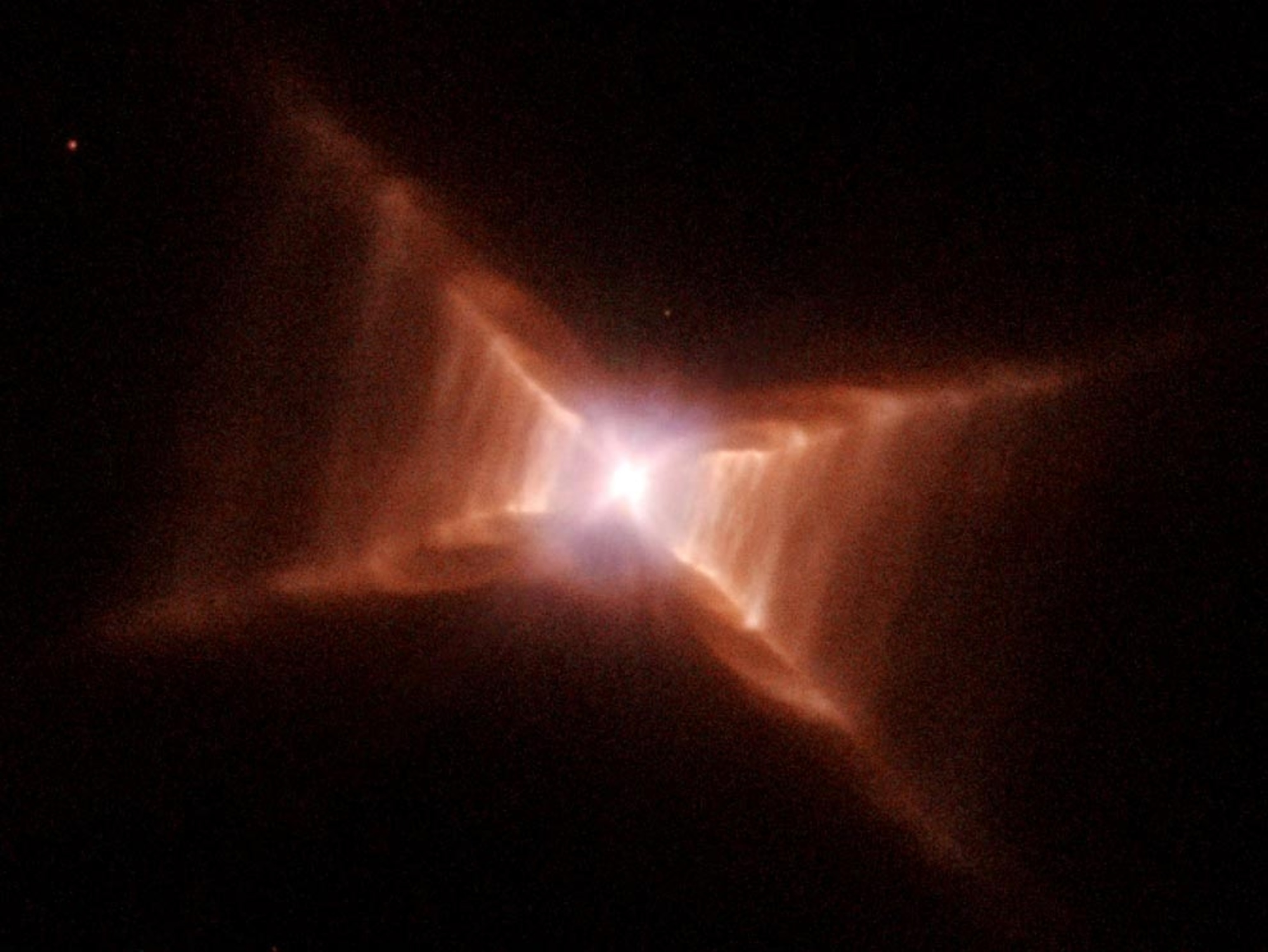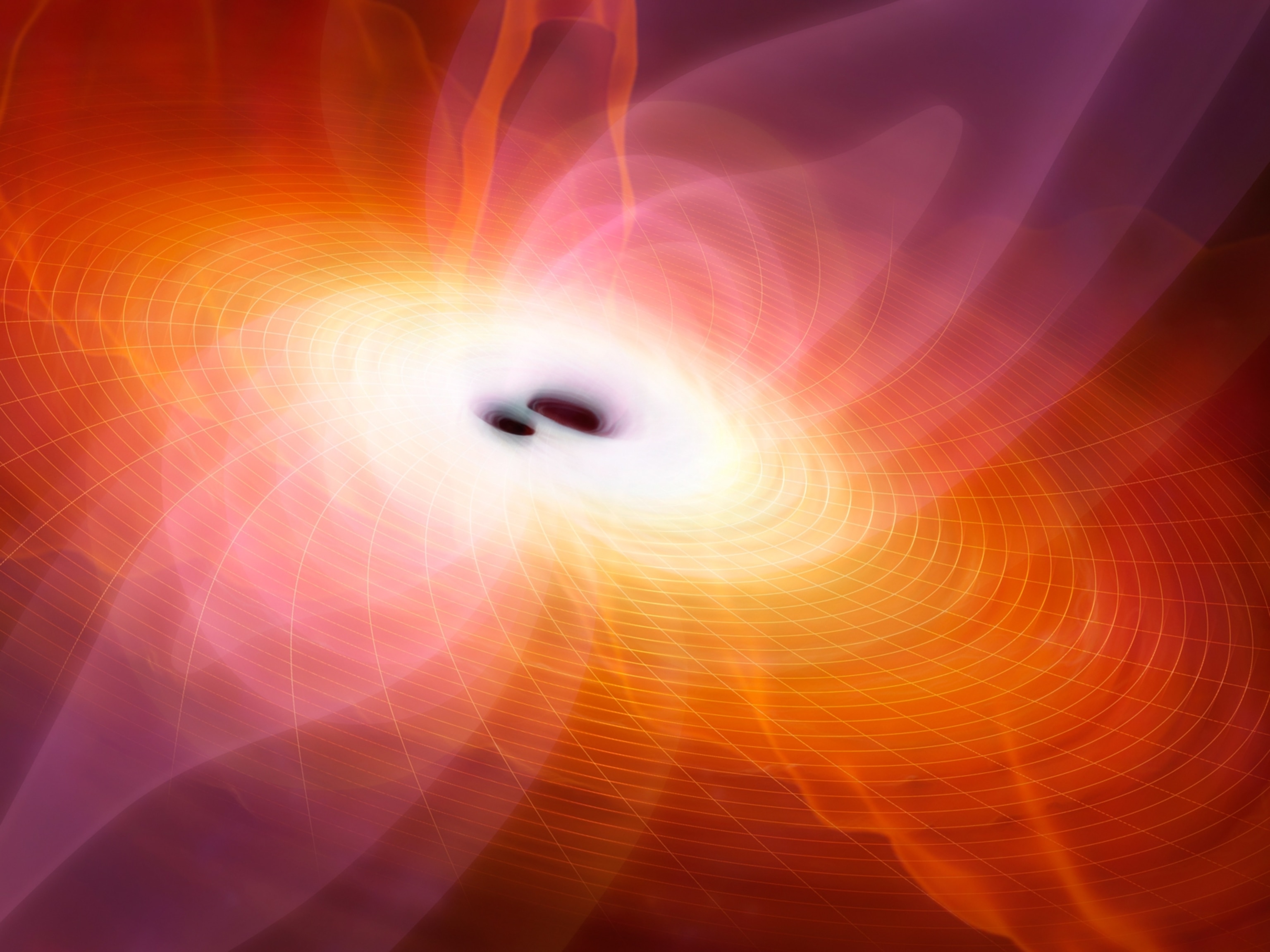
Bizarre Black Holes Revealed by New Space-Time Ripples
More massive than expected, the black holes collided three billion years ago and sent gravitational waves washing over Earth.
A long time ago in a star cluster far, far away … two curiously massive black holes collided and became one, unleashing a torrent of energy that kinked the fabric of space-time itself.
Now, instruments on Earth have sensed the gentle ripples from that distant cosmic cataclysm, marking the third-ever confirmed direct detection of gravitational waves. The combined detections, all reported by the Laser Interferometer Gravitational-wave Observatory (LIGO), are opening up a new window onto the cosmos.
Crucially, the waves carry information about their far-flung sources, and the results are challenging a bunch of ideas about how black holes grow, where they live, and how they end up locked in such violent, deadly dances. (Read “Astronomers May Finally Have the First Picture of a Black Hole.”)
“The universe still contains mysteries,” says astrophysicist Daryl Haggard of McGill University. “We thought we were walking through the world knowing how black holes happened, and now we’re seeing that there’s some real discovery space here.”
Boom Go the Black Holes
LIGO detected waves from the latest black hole collision on January 4, 2017—about three billion years after the actual event happened. The gravitational ripples washed over Earth and ever so slightly jiggled identical sets of lasers and mirrors built in Hanford, Washington, and Livingston, Louisiana.
The waves shrank and expanded space on Earth by just a fraction of the width of a proton, one of the particles that makes up an atomic nucleus. That’s obviously impossible for humans to perceive, but LIGO’s detectors are so sensitive that even such tiny perturbations can’t escape their laser eyes.
After carefully analyzing the signal, the LIGO team determined it was the fingerprint of a catastrophic collision between two black holes, one with a mass equal to roughly 30 suns, and the other with the mass of 19 suns.
Those black holes had been dancing around one another for eons, slowly being drawn into what would become a cosmic death spiral. As they tiptoed closer together, the black holes radiated energy in the form of gravitational waves. And when they eventually collided and merged, they released even more energy, also in the form of these cosmic ripples.
The resulting single black hole born of that furious cosmic spiral is a whopping 50 solar masses-worth of curved, bottomless space-time, the team reports today in the journal Physical Review Letters.
Oddly Heavy Holes
LIGO’s first two gravitational wave detections, made in September 2015 and December 2015, also involved collisions between black holes. In two of the three cases, the black holes are perplexingly massive compared to what astrophysicists expected.
Together, they’re telling scientists that a lot of what they thought they knew about so-called stellar mass black holes isn’t quite right.
Stellar mass black holes are corpses formed when stars more massive than the sun explode and die. Naively, you might think that the bigger the star, the bigger its corpse. But that’s not necessarily the way astrophysics works.
Instead, the larger the star, the more blustery it is, and its fierce stellar winds blast matter into space over the course of the star’s lifetime. By the time the star dies, it’s lost a lot of its mass, and it ultimately crumples into a relatively small black hole.
For decades, theory and observation suggested that stellar black holes couldn’t exceed roughly 10 solar masses, says Steinn Sigurdsson of Pennsylvania State University. But LIGO is revealing multiple black holes significantly more massive than that assumed limit—though far less hefty than the big bruisers that live at the hearts of galaxies.
“Before our discoveries, we didn’t even know for sure that these black holes existed,” says LIGO team member Laura Cadonati of Georgia Tech. Now, astrophysicists have to grapple with explaining how such bizarre objects formed.
“We have to figure out a way to explain how massive these are,” Haggard says. “This was already a quandary for the first discovery, because 30 solar mass black holes—we didn’t have models that totally ruled that out, but it’s a little surprising. These [newly found black holes] are just really massive.”
One way to explain these black holes suggests that their big, doomed parent stars were primarily made of hydrogen and helium, which result in less tempestuous winds and less mass loss. When those stars die, more of their mass ends up collapsing into the black hole.
Such stars were once common in globular clusters, or dense clumps of extremely old stars that orbit galaxies, including our own.
Dueling Origin Stories?
Another line of LIGO evidence supports the idea that globular clusters play a role in the saga of dual heavy black holes.
From the gravitational wave signals, the LIGO team could deduce various characteristics of the black holes before they merged—including the direction they were spinning and the orientations of their spin axes. Based on that information, Cadonati says, it appears that the collision happened inside a globular cluster.
One theory for the origins of binary black holes involves a pair of massive sibling stars orbiting one another. When those stars die, their corpses continue that dance, often resulting in a pair of black holes with similar spins and orientations.
But the most recent LIGO data suggest that the former black holes have spins that aren’t quite aligned. It’s possible these black holes formed far apart from each other inside a globular cluster. They then sank to the center of the cluster, where they ultimately found themselves wrapped in an unlucky spiral.
Pictures: Life and Death of Stars
Here, their fate is a product of dynamics and chaos in the cluster’s core, rather than a lifetime spent in close proximity. That explanation seems to fit the current data, but there’s no reason to think that only one scenario is right, Sigurdsson says.
“My personal inclination is that it’s happening both in the galactic field and in the clusters, and the clusters are probably driving this high mass population we’re seeing at large distances,” Sigurdsson says.
“That is starting to tell us something about the population, where it’s coming from, and it’s going to be a major catfight at the workshop I’m running this summer.”
Answers will come in the form of more LIGO detections—some of which are imminently expected—and as astronomers revise their theories to fit the new observational data.
Already, the LIGO data are challenging a bunch of ideas about stellar evolution and star clusters, and even some conceptions of the mysterious substance known as dark matter, Haggard says. But Einstein’s theory of general relativity is holding up quite well: The LIGO data are beautifully consistent with its predictions.
"The astrophysics of how you get these [black holes] is a complete train wreck,” Haggard says. “But the physics is tidy."

